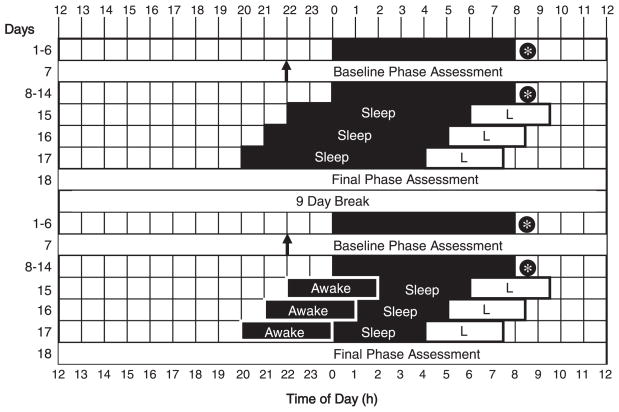Figure 1.
A sample protocol for a subject who typically slept from midnight to 0800 h. There were 6 days of baseline sleep at home (days 1–6), a baseline phase assessment in the laboratory (day 7), a further week of baseline sleep at home (days 8–14), followed by a 3-day phase-advancing protocol in the laboratory (days 15–17) and then a final phase assessment (day 18). After a 9-day break, this sequence was repeated. In the no sleep deprivation condition (top), there was an 8-h sleep opportunity per night in the phase-advancing protocol. In the partial sleep deprivation condition (bottom), there was 4 h of enforced wakefulness in near darkness, followed by a 4-h sleep opportunity per night in the phase-advancing protocol. Thus, the light-dark cycle was similar in both conditions, but the duration of the sleep opportunity varied. The 2 conditions were counterbalanced across subjects. Black shading = sleep/dark episodes at night. * = at least 10 min of morning outdoor light. ↑= time of dim light melatonin onset. L = advancing bright light stimulus: four 30-min bright light pulses alternating with room light, starting 8 h after the baseline dim light melatonin onset, and advancing by 1 h on the second and third mornings. For clarity, the phase assessments are shown as starting and ending at 1200 h.

